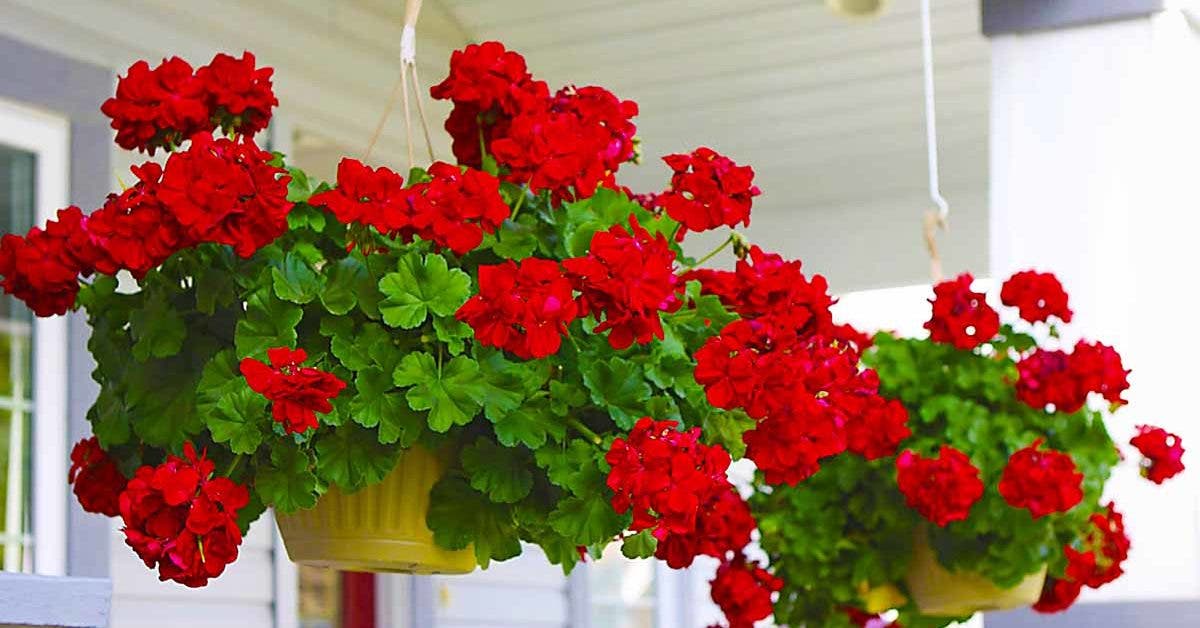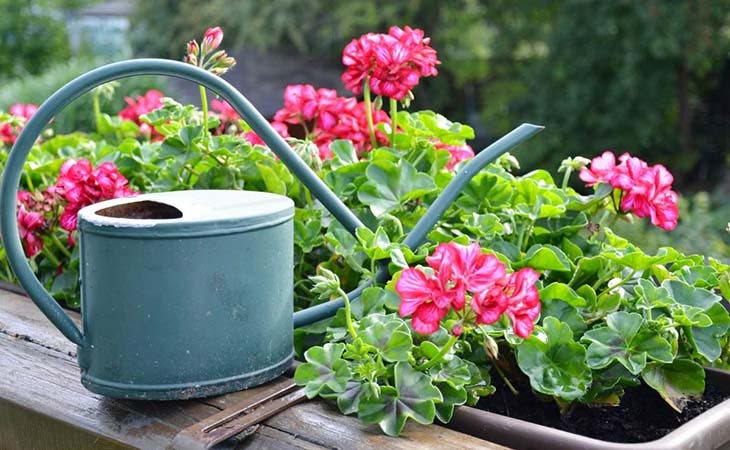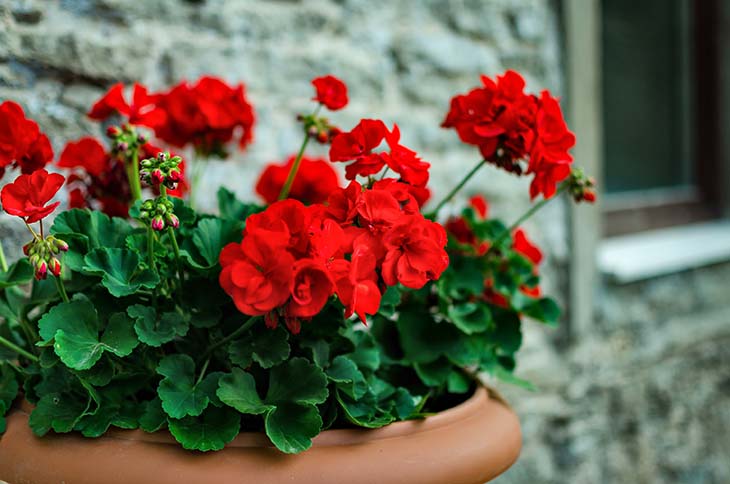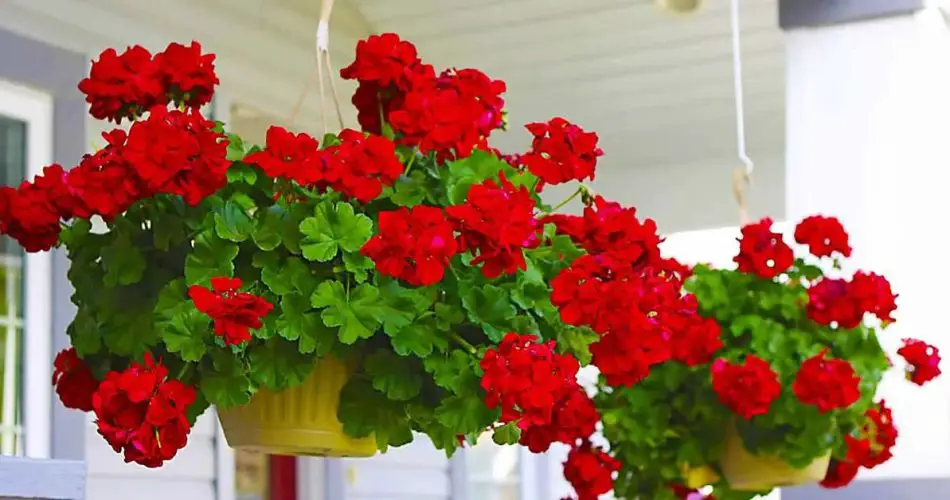Pelargonium, commonly known as the florist’s geranium, is a popular perennial plant with evergreen foliage from the Geraniaceae family. Native to South Africa, this easy-to-care-for plant is widely grown in gardens and on balconies. Its colorful flowers range from white and pink to purple and blue, adding vibrant hues to any outdoor space. However, sometimes the foliage of the pelargonium can turn red, signaling potential issues with its care. Here are the 3 main reasons why this happens and how to fix it.

1. Red Leaves from Overwatering
Pelargoniums prefer well-drained soil with low moisture. This plant only needs a small amount of water, and overwatering can lead to discolored leaves. Excess moisture can drown the roots, especially in container-grown pelargoniums, and cause red leaves.
Standing water in the saucer beneath the pot is a common culprit, as it prevents the roots from getting enough oxygen. If overwatering continues, the plant’s leaves may eventually fall off and die.
To avoid overwatering, always check the soil moisture before watering. Insert your finger into the soil; if it feels damp, skip watering. Be sure to empty any water from the saucer to prevent root rot.
2. Red Leaves Due to Cool Temperatures
Pelargoniums thrive in warm temperatures and are sensitive to cold. Fluctuating temperatures, particularly in spring and fall, can cause shock to the plant and turn the leaves red. In spring, as temperatures fluctuate, the plant can become stressed, and in fall, when temperatures drop, your pelargonium may suffer.
To prevent this, it’s crucial to bring your potted geraniums indoors when the weather starts to cool. Pelargoniums are particularly sensitive to sudden drops in temperature and should be protected from the cold to keep their foliage green.
3. Red Leaves Due to Stress

When the leaves of your pelargonium turn red, it’s often a sign of stress. Stress in pelargoniums can be caused by overwatering, but it can also result from prolonged exposure to direct sunlight. While pelargoniums enjoy the sun, intense sunlight—especially on older leaves—can lead to discoloration.
If your plant is showing signs of stress from sunburn, it’s best to move it to a location with partial shade to protect it from further damage. Additionally, early planting when the weather is not favorable can also stress the plant, as well as poor soil quality that lacks essential minerals. Pelargoniums are sensitive to nutrient deficiencies, particularly phosphorus and trace elements.
To remedy this, fertilize your plant with a liquid fertilizer rich in phosphorus every two weeks during the growing season. Regular fertilization will help promote healthy growth and prevent further stress.
How to Care for Florist’s Geranium and Preserve the Color of Its Leaves

Pelargoniums are fairly easy to care for with a few essential tips:
- Watering: Always check the soil moisture before watering your plant. Allow the soil to dry out between waterings to avoid overwatering. Be sure to empty any water from the saucer to ensure good drainage.
- Repotting: To keep your pelargoniums healthy, repot them every two years. Use a layer of clay balls at the bottom of the pot to improve drainage.
- Pruning: Regularly prune your geraniums to promote vigorous growth and abundant flowering. Use sharp, disinfected pruning shears to remove faded flowers and dead leaves. Pruning also encourages new, healthy growth and helps maintain the green color of the leaves.
- Protection from Pests: Protect your geraniums from common pests such as green aphids, thrips, and whiteflies, which can cause damage and stress to the plant.
By avoiding overwatering, protecting your plant from stressful conditions, and ensuring proper nutrition, you can maintain vibrant green foliage and a healthy pelargonium throughout the year. Even if you don’t have a green thumb, with a little attention, your florist’s geranium can thrive and keep its stunning appearance.



